FUNDING CUTS IMPACT CT HUMANITIES: Help CT Humanities navigate recent funding cuts and continue our vital work across Connecticut. All donations made to CTH will be matched dollar-for-dollar up to $50,000. Donate today!
Now Viewing:
Civil War and Reconstruction 1850-1877
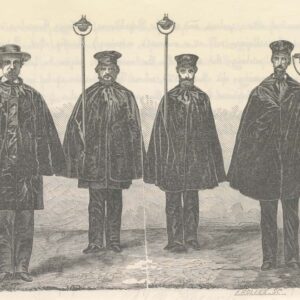
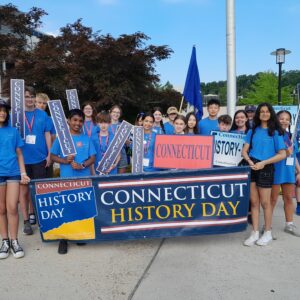
Connecticut History Day 2026: Revolution, Reaction, Reform in History
Connecticut’s people have taken on responsibilities to establish state and national rights through the courts, protests, and everyday acts.
Read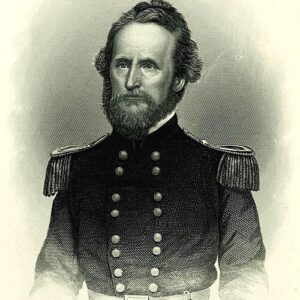
Nathaniel Lyon: First US General to Die During the Civil War
Eastford’s General Nathaniel Lyon became nationally famous as the first US general killed during the Civil War.
Read
Charles W. Morgan: New England’s Last Surviving Wooden Whaling Ship
As the last surviving wooden whaling ship of New England, the Morgan is representative of a typical 19th-century whaling vessel.
Read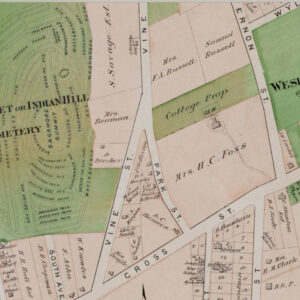
Middletown’s Beman Triangle: A Testament to Black Freedom and Resilience
One of the earliest and most politically active free Black neighborhoods in Connecticut emerged in Middletown in the late 1820s, the Beman Triangle.
Read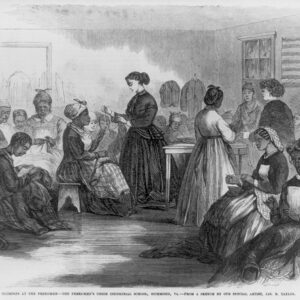
Hebron’s Josephine Sophia (White) Griffing and a Vision for Post-Emancipation America
From before emancipation and the 13th Amendment, Josephine Sophie White Griffing of Hebron, Connecticut, was an ardent advocate for enslaved and free people.
Read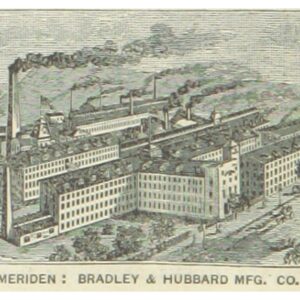
Illuminating Connecticut’s Past: The Bradley & Hubbard Legacy
Meriden’s Bradley & Hubbard Manufacturing Company was an industry-leading American manufacturer of kerosene lamps and metal household items.
Read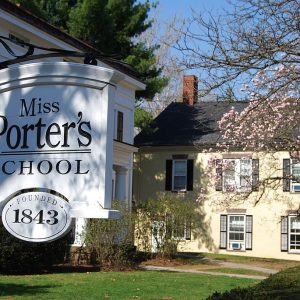
Miss Porter’s School in Farmington
Miss Porter’s School, founded in 1843 in Farmington, is an elite, female, privately funded, 40-acre, educational institution in central Connecticut.
Read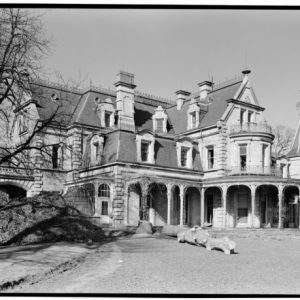
Lockwood-Mathews Mansion Captures the Gilded Age in Norwalk
The Lockwood-Mathews Mansion provides a glimpse into the opulence of the Gilded Age when railroad tycoons built summer homes along the New England shoreline.
Read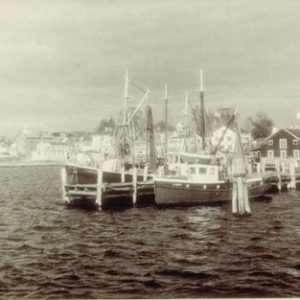
The Sea in their Blood: The Portuguese in New London County
Many Portuguese immigrants came to the US as mariners serving aboard ships, some remained to build new lives and communities in Connecticut.
Read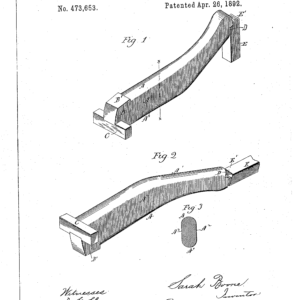
Sarah Boone: First Connecticut Black Woman to Receive Patent
In1892, Sarah Boone of New Haven became the first Black woman in Connecticut to be awarded a patent—for an improvement in the use of an ironing board.
Read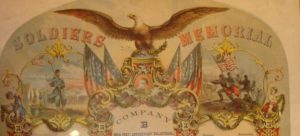
Connecticut’s Black Civil War Regiment
“If you win freedom and citizenship, we shall share your freedom and citizenship.” With these words, abolitionist Frederick Douglass reminded African American soldiers from Connecticut that they fought for the hopes of many.
Read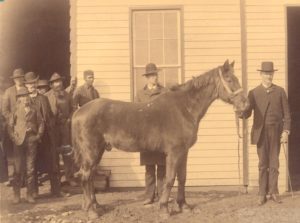
Little Sorrel, Connecticut’s Confederate War Horse
The horse Little Sorrel became one of the most famous residents of Somers, Connecticut, and a legendary figure of the Civil War.
Read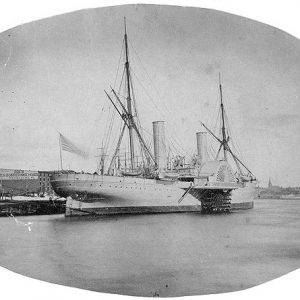
They Also Served: Chinese, Southeast Asians, and Hawaiians in the American Civil War
There were a substantial number of Chinese, Southeast Asian, and Pacific Islanders who fought in the Civil War—many of whom served in Connecticut regiments.
Read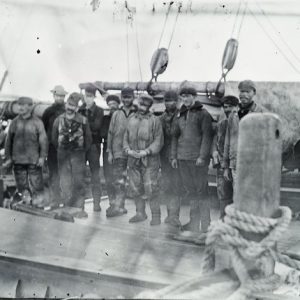
Africans in Search of the American Dream: Cape Verdean Whalers and Sealers
Cape Verdeans formed parts of whaling and sealing crews leaving Connecticut since the early 19th century, sometimes even rising to positions of authority.
Read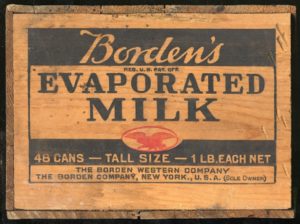
Evaporated Milk’s Connecticut Connection – Who Knew?
In, 1856 businessman Gail Borden Jr. opened the first commercial milk condensery at Wolcottville (now Torrington).
Read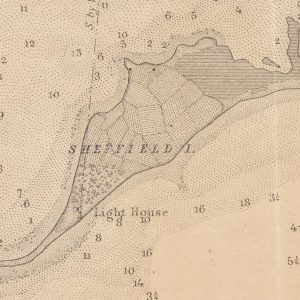
The “Welcoming Beacon” of Sheffield Island Lighthouse
Sheffield Island, is home to one of Connecticut’s historic lighthouses—a stone structure with a celebrated past dating back two hundred years.
Read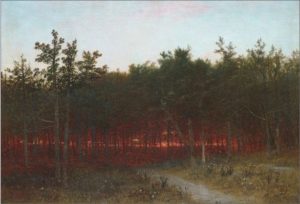
John Frederick Kensett Illuminates the 19th-Century Landscape
John Frederick Kensett was a landscape painter now identified with Luminism—a style of painting utilizing delicate brushstrokes to capture subtle natural light.
Read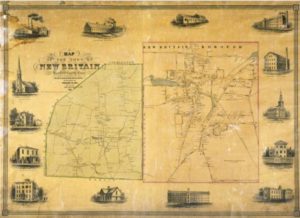
“A Noble and Precious Life”: Edgar M. Woodford, Civil Engineer, Abolitionist, and Soldier
This Avon-born man not only put his talents on the map, literally, he also went west to secure Kansas as a free state.
Read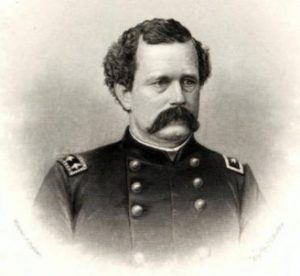
General Joseph R. Hawley Helps Commemorate Connecticut’s Civil War Soldiers
“Let monuments be raised in every town, let songs be sung and orations delivered,” urged this state politician and skilled speechmaker.
Read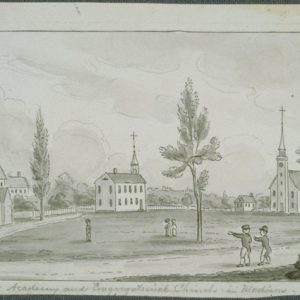
Lee’s Academy: An Icon of Education for 200 Years
For over two hundred years, Lee’s Academy has been a staple of education in Madison, Connecticut.
Read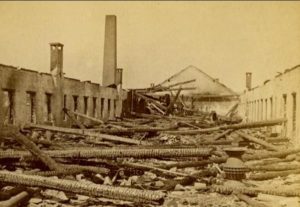
Up from the Ashes: Fire at the Meriden Britannia Company – Today in History: July 16
A manufacturer of silver-plated ware rebounds from the worst fire ever to occur in Meriden.
Read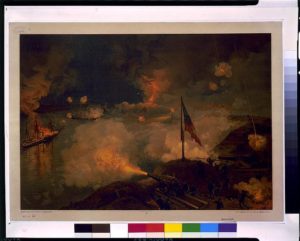
Connecticut’s Naval Contributions to the Civil War
Companies across Connecticut helped keep the Union navy afloat while sea-savvy leaders and sailors from the state kept it in fighting form.
Read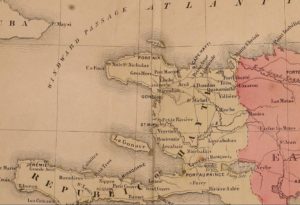
Ebenezer Bassett’s Historic Journey
Ebenezer Bassett, an educator, activist, and associate of Frederick Douglass, served the US as its first African American ambassador.
Read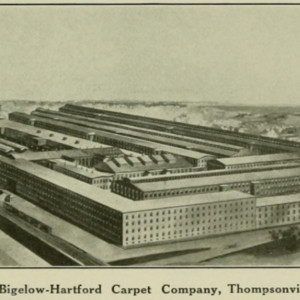
First Connecticut Carpet Mills Emerge in Simsbury and Enfield
In the 1820s, the first two notable carpetmakers emerged in the north central part of Connecticut—the Tariff Manufacturing Company and the Thompsonville Carpet Manufacturing Company.
Read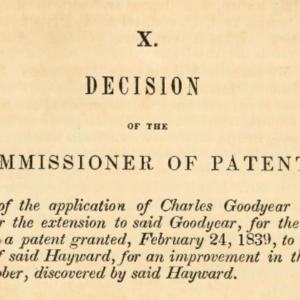
Rubber Vulcanization and the Myth of Nathaniel Hayward
Colchester has a persistent myth that Hayward invented vulcanization—a process that helps make rubber useful for manufacturing—but did not receive the credit he deserved.
Read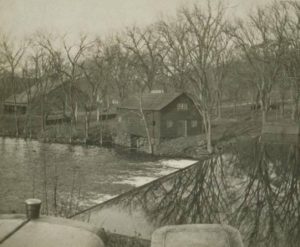
Powder Hollow in Hazardville – Who Knew?
40% of all the gunpowder consumed in the Civil War came from Powder Hollow in Hazardville (a part of Enfield, Connecticut).
Read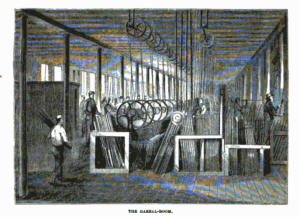
Norwich’s “Volcanic” Past
With its water power, its location, and proximity to major port cities, Norwich has been attracting gun manufacturers since the American Revolution.
Read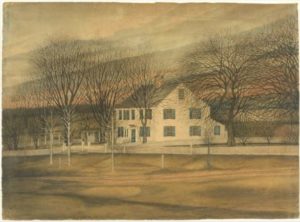
The Smith Sisters and Their Cows Strike a Blow for Equal Rights – Today in History: January 8
Abigail and Julia Smith of Glastonbury (along with Isabella Beecher Hooker) fought for a woman’s right to speak at town meetings and have a say in government.
Read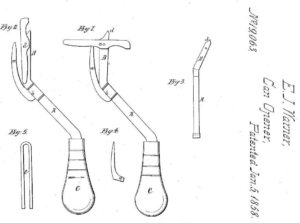
The First US Can Opener – Today in History: January 5
On January 5, 1858, Waterbury native Ezra J. Warner invented the first US can opener.
Read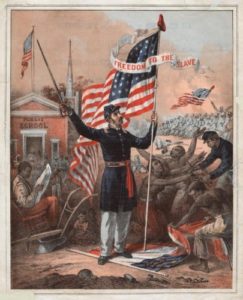
From the State Historian: Connecticut’s Slow Steps Toward Emancipation
Slavery remained in the Land of Steady Habits until 1848, and it was not quick to advance suffrage for African Americans, either.
Read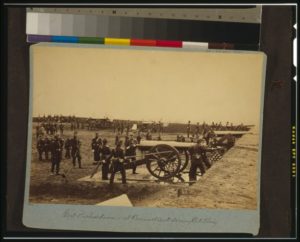
The Complicated Realities of Connecticut and the Civil War
The history of the Civil War surrounds Connecticut residents both in terms of its physical realities and in the lasting legacies of a complicated conflict.
Read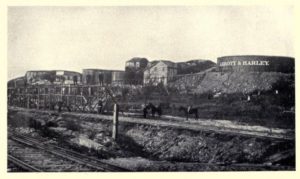
William Hawkins Abbott Finds the Energy to Power the Northeast
William Hawkins Abbott helped transform the market for affordable energy through his oil refining, pipeline, and distribution networks.
Read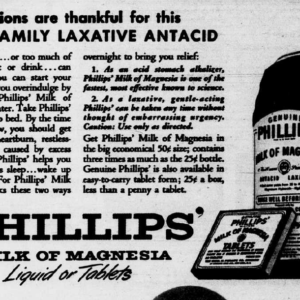
Phillips’ Milk of Magnesia Originated in Stamford
In 1873, Charles H. Phillips patented Milk of Magnesia and his company produced the popular antacid and laxative in Stamford, Connecticut, until 1976.
Read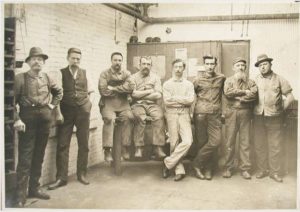
Late 19th-Century Immigration in Connecticut
Immigration to Connecticut in the second half of the 19th century proceeded much as it had in earlier decades.
Read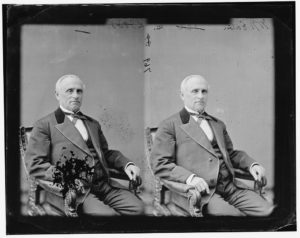
William Eaton, a Peace Democrat and Civil War Opponent
This 19th century Connecticut politician took a controversial stand against a war that would divide the Union and decrease states’ rights.
Read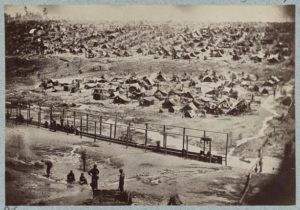
Remembering Civil War Prisoners of War
Outside the Connecticut State Capitol building in Hartford stands a monument to the Connecticut prisoners retained at the Andersonville Prison during the Civil War.
Read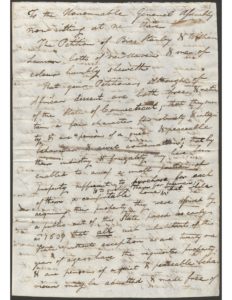
“’No Taxation without Representation’: Black Voting in Connecticut
In 1870, Connecticut ratified the 15th Amendment, but poll taxes, grandfather clauses, and other means of disenfranchising African Americans remained in place.
Read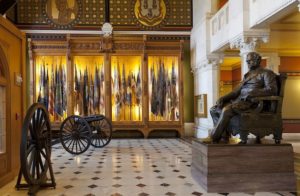
Hall of Flags: Memorial to Connecticut’s Civil War Colors
Battle flags played an important strategic and ceremonial role in Civil War battles. The preservation of Connecticut’s Civil War colors has been a long, delicate, and expensive process.
Read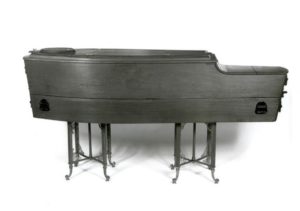
Death and Mourning in the Civil War Era
The Civil War transformed traditional practices of death and mourning in Victorian-era Connecticut.
Read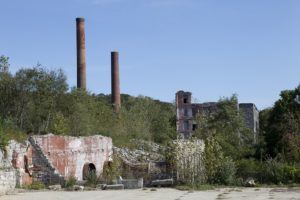
A Baltic Mill Helps Found a New Town
The Baltic Mill was once the largest cotton mill in the United States and led to the founding of the town of Sprague.
Read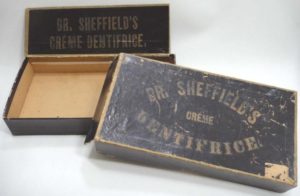
Aristocratic Dental Cream Gets Squeezed
Taking advantage of his skills as a dentist and chemist, Dr. Washington Wentworth Sheffield, in 1850 at the age of 23, invented modern toothpaste.
Read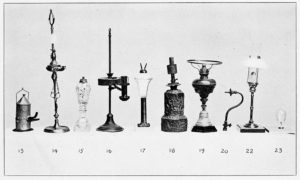
Connecticut Domestic Oil Lamp Makers
In a time before gas lamps and incandescent bulbs were more widely embraced, Connecticut firms made oil lamps using various fuels, burners, and different materials.
Read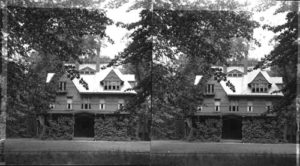
Charles Dudley Warner: 19th Century Writer and Social Commentator
Author Charles Dudley Warner penned significant volumes of work, leaving an impact through his enduring social commentary in the second half of the 19th century.
Read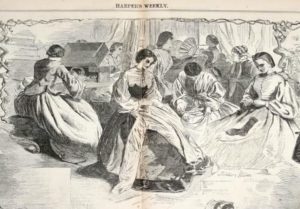
Crisis Management during the American Civil War: The Hartford Soldiers’ Aid Society
The Hartford Soldiers’ Aid Society was one of the most important relief organizations during the Civil War and provided new opportunities for women in the public sphere.
Read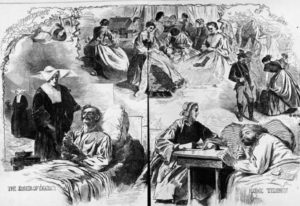
Bridgeport Women Answer the Call – Today in History: April 15
On April 15, 1861, the women of Bridgeport created the nation’s first soldiers’ aid society during the American Civil War.
Read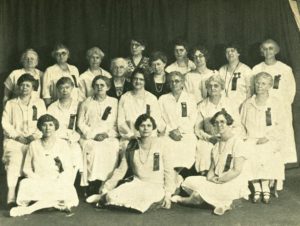
Celebrating Civil War Men and Women – Today in History: April 9
On April 9th, 1927 the Woman’s Relief Corps and Daughters of Union Veterans commemorated the 62nd anniversary of the surrender at Appomattox Courthouse.
Read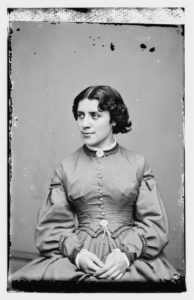
Anna Elizabeth Dickinson at Touro Hall – Today in History: March 24
On March 24, 1863, Anna Elizabeth Dickinson, a 20-year-old Quaker and abolitionist from Pennsylvania, spoke at Hartford’s Touro Hall.
Read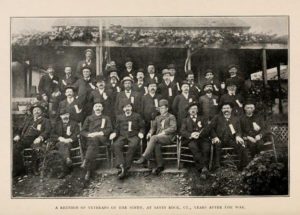
Fighting Sons of Erin: Connecticut’s Irish Regiment in the Civil War
Men with names like O’Brien, Kennedy, Mahoney, Murphy, Donnelly, Fitzpatrick, and Sullivan flocked to enlist in what a recruiting poster confidently described as a “destined to be gallant Regiment.”
Read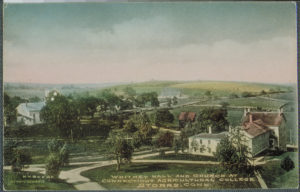
Connecticut Soldiers’ Orphans’ Home
In 1866, the Connecticut Soldiers’ Orphans’ Home opened in Mansfield to house and educate boys and girls left parentless by the Civil War.
Read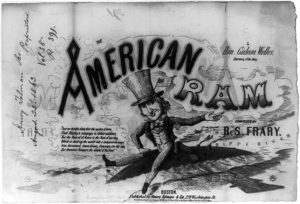
Gideon Welles, US Secretary of the Navy and Lincoln’s “Neptune”
Gideon Welles was the Secretary of the United States Navy from 1861 to 1869 and a cabinet member during the presidencies of Abraham Lincoln and Andrew Johnson.
Read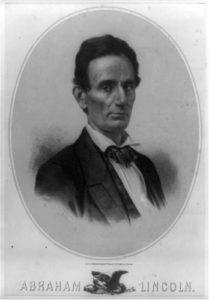
Abraham Lincoln’s Republican Rally – Today in History: March 5
On March 5, 1860, Abraham Lincoln addressed the Republicans of Hartford at City Hall.
Read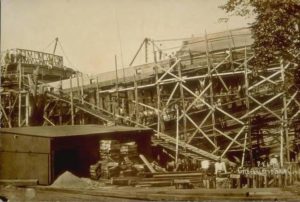
The Gildersleeve Shipbuilding Legacy in Portland
Perhaps the most recognizable name in the history of Portland, Connecticut shipbuilding is Sylvester Gildersleeve.
Read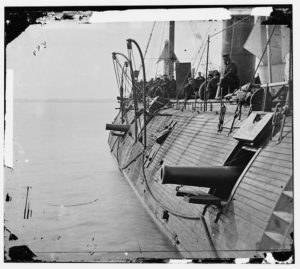
Mystic-built USS Galena Part of Plan to Strengthen Union Navy
This 950-ton, steam-propelled gunboat took fire from critics and Confederates during the Civil War.
Read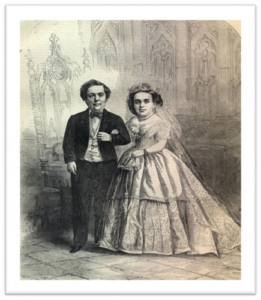
Charles Stratton and Lavinia Warren Wed – Today in History: February 10
He was rich, handsome and famous, she was considered a great beauty and their wedding was front page news around the nation.
Read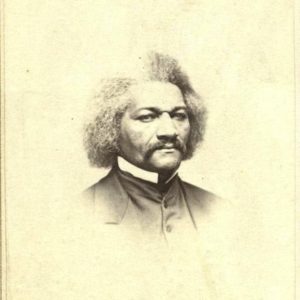
“An Admirable Portrait” of Frederick Douglass
Hartford photographer Stephen H. Waite capitalized on the public’s interest in the great abolitionist, Frederick Douglass.
Read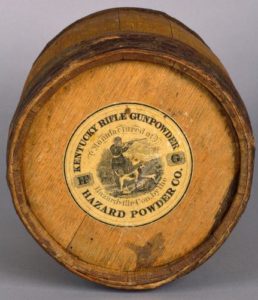
One-Legged Stools – Who Knew?
Hazard Powder Company employees sat on one-legged stools to keep them from falling asleep while working with dangerous materials.
Read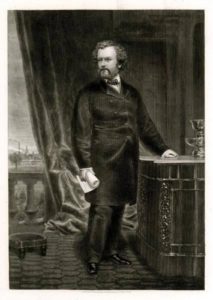
Sam Colt’s Funeral: The Day Hartford Stopped
The funeral of America’s first great munitions maker was spectacular—certainly the most spectacular ever seen in the state’s capital city.
Read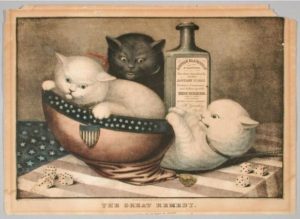
The Great Remedy: Picturing the Emancipation Proclamation
On January 1, 1863, the Emancipation Proclamation went into effect, declaring more than three million African Americans in those states in rebellion against the United States to be forever free.
Read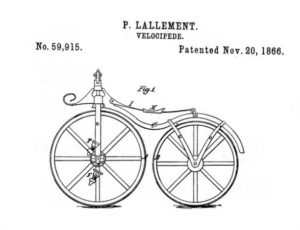
Pierre Lallement and the Modern-Day Pedal Bicycle – Today in History: November 20
On November 20, 1866, mechanic Pierre Lallement, a temporary resident of New Haven, Connecticut, received a patent for an improvement in velocipedes.
Read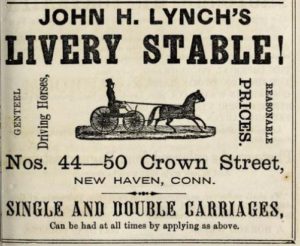
New Haven: What Was Everyday Life Like During the Civil War?
A great primary resource for digging into a community’s everyday life is a city directory.
Read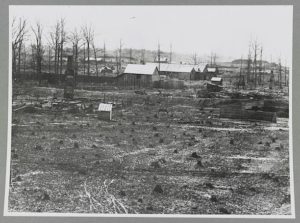
Connecticut’s Chickamauga Tree: An Investigation
The Connecticut State Capitol displays part of a tree with a cannonball lodged in it. While it is believed to be a remnant of the battle at Chickamauga Creek during the Civil War, evidence exists suggesting the artifact may have been fabricated for the purpose of commercial sale.
Read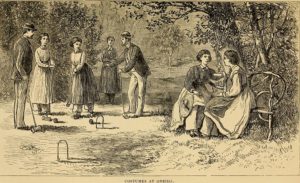
The Wallingford Oneida Community
In the late 1800s, Wallingford was home to a small branch of the Oneida Community.
Read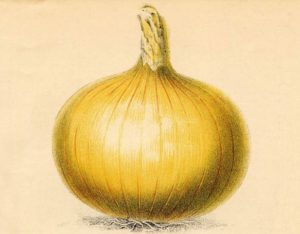
The Many Layers to Onion Farming in Westport
Westport’s fertile soil and ease of access by boat and rail once made it home to a thriving onion farming industry.
Read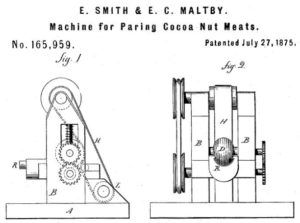
North Branford Vied for the Title of “Shredded Coconut Capital of the World” – Who Knew?
Patents granted to North Branford residents included one for a device used for paring coconut meats in 1875.
Read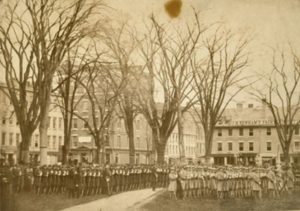
The First Battle of Bull Run: Connecticut Troops Stand Firm When the Battle Turns Against Them
Connecticut troops earned admiration for staying to fight when others fled at the First Battle of Bull Run during the American Civil War.
Read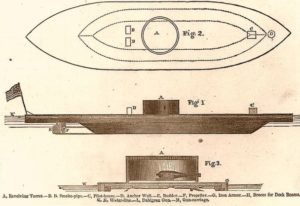
Cornelius Bushnell and His Ironclad Ship
Cornelius Scranton Bushnell was a 19th-century Connecticut businessman and shipbuilder whose successfully lobbied on behalf of a local railroad enterprise.
Read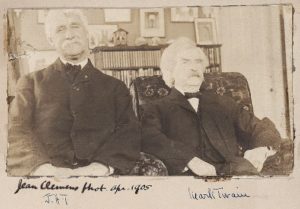
Joseph Hopkins Twichell: Asylum Hill’s Religious Leader and Mark Twain’s Closest Friend
Inspired by his friendship with Mark Twain, Joseph Twichell took up such causes as labor rights, immigration, education, and interfaith advocacy.
Read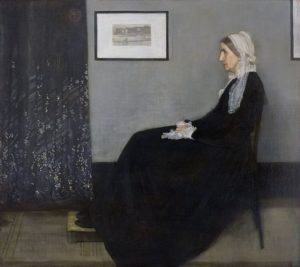
James Abbott McNeill Whistler: A Young Artist in Pomfret
As one of the most well-known American realist painters of the late 19th century, James Abbott McNeill Whistler has intrigued art history enthusiasts for over a century.
Read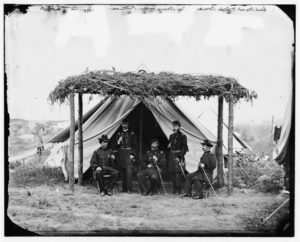
A Civil War Soldier Engineers an Iconic Career
Horatio Wright commanded troops in Civil War battles fought all over the country, from Virginia to Florida, and out West as far as Ohio.
Read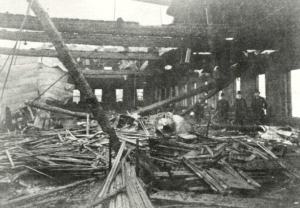
Today in History – Fales & Gray Explosion Underscores Need for a Hartford Hospital
At 2 pm on March 2, 1854, the power of steam incorrectly managed and harnessed wreaked havoc at the railroad-car factory Fales & Gray Car Works in Hartford.
Read
Charles Stratton and Lavinia Warren Wed – Today in History: February 10
He was rich, handsome and famous, she was considered a great beauty and their wedding was front page news around the nation.
Read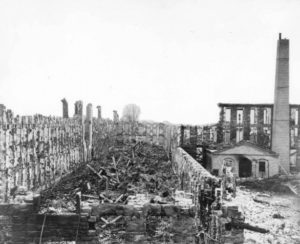
Colt Armory Burns – Today in History: February 4
On February 4, 1864, most of Colt’s East Armory, located in Hartford, burned to the ground.
Read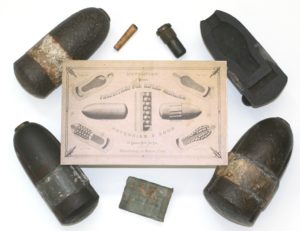
Connecticut Arms the Union
By the Civil War’s end, Connecticut had supplied 43% of the total of all rifle muskets, breech loading rifles and carbines, and revolvers bought by the War Department.
Read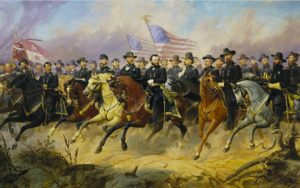
Honor and Duty: The Life of Alfred Howe Terry
Born in Hartford, Alfred Howe Terry studied law before heroically capturing Fort Fisher during the Civil War.
Read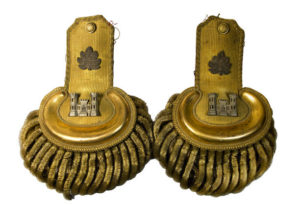
One of the Honored Dead: General J. K. F. Mansfield
A resident of New Haven and Middletown, Joseph Mansfield rose to the rank of brigadier general in the Union army before losing his life at the Battle of Antietam.
Read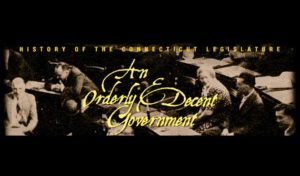
An Orderly & Decent Government: Searching for the Common Good, 1819-1865
During the early 19th century, the General Assembly was slow to deal with rising crime, poverty and the other social costs of a rapidly changing society.
Read
An Orderly & Decent Government: Making Self-Government Work, 1819-1865
In the mid-19th century, Connecticut looked toward changing its electoral processes as well as its civil rights record.
Read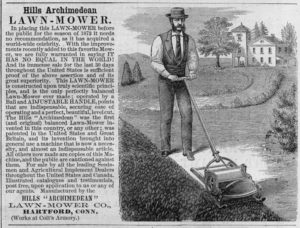
Reel Lawn Mower Patent – Today in History: January 28
On January 28, 1868, Amariah Hills of Hockanum, Connecticut, received the first US patent for a reel-type lawn mower and sold the patent in the 1870s.
Read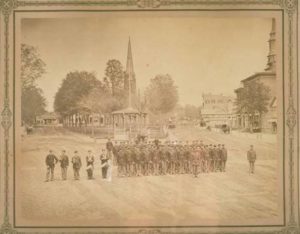
The Civil War Commences: Connecticut’s Involvement in the Civil War
Diaries, letters, and other documents provide firsthand witness to the sacrifices of Connecticut men and women during the years of bloody conflict.
Read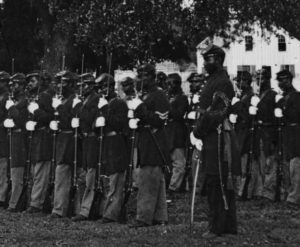
29th Connecticut Colored Infantry Regiment
The state’s first African American regiment of the Civil War distinguished itself by battling Confederate forces and 19th-century prejudices.
Read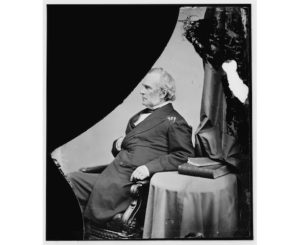
Connecticut’s War Governor, William A. Buckingham
Connecticut governor William Buckingham’s bronze statue at the Connecticut State Capitol honors his guidance of Connecticut through the Civil War.
Read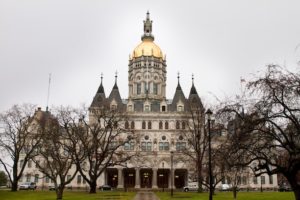
Civil War Monuments and Memorials in and Around the State Capitol
Monuments and memorials from the Civil War era in and around the state capitol in Hartford, Connecticut.
Read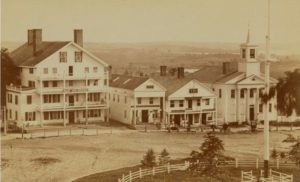
The Peace Movement in Litchfield
While the peace movement in Litchfield was short-lived, it provides a reminder of the disparity in public opinion during the first few turbulent months of the Civil War.
Read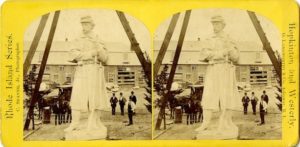
Pomp and Circumstance: Civil War Commemoration
The completion of the Forlorn Soldier did not meet with the pomp and circumstance of many other CIvil War commemorations, despite its media coverage and an overflowing sense of nationalism among the general public.
Read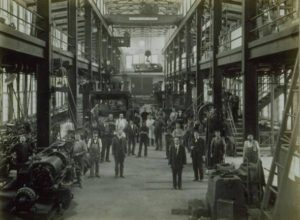
Christopher Miner Spencer, 19th-century Arms Manufacturer
Christopher Miner Spencer, from Manchester, obtained 42 patents during his lifetime and created the first successful breech-loading repeating rifle.
Read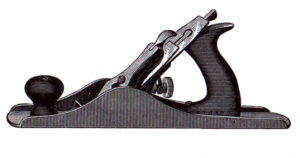
Stanley Works for New Britain
In 1843, Frederick Stanley founded a small shop in New Britain to manufacture bolts, hinges, and other hardware products for sale to local residents.
Read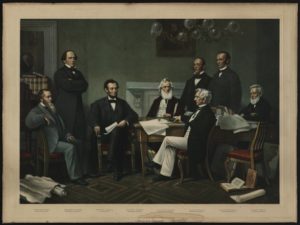
Gideon Welles’s Role in Lincoln’s Cabinet
Earning the trust of Abraham Lincoln, despite reservations from many in Lincoln’s cabinet, Gideon Welles navigated the Union navy through the Civil War. He did this largely through expanding the navy and investing in new technology, such as ironclad ships.
Read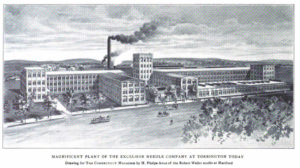
Thread Your Needle – Today in History: March 2
On March 2, 1866, the Excelsior Needle Company of Wolcottville was organized and produced machine-made sewing needles by a new method called swaging.
Read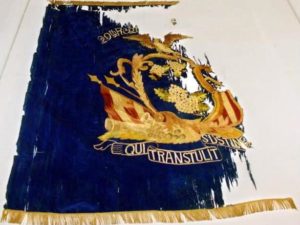
The 29th Regiment Connecticut Volunteer Infantry Flag and Display
Regimental flags played important symbolic and strategic roles in battle. The State of Connecticut maintains a collection of 110 such flags from the Civil War, among them, the flag of the 29th (Colored) Volunteer Infantry.
ReadMore Articles




